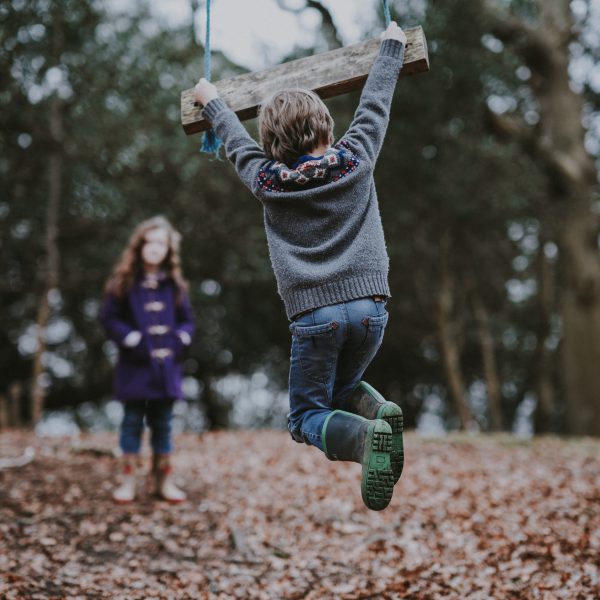Provoking the children: why that matters for remarkable early learning

Our research shows why play matters in supporting young children’s learning and development. We have so many resources and materials within early childhood education but it is the way in which these resources are shared with children which impacts their capacity to learn through play.
Poorly resourced learning environments lack variety and stimulation, while excessively resourced spaces can be overwhelming and distracting, resulting in a lack of concentration skills. When presented using thoughtful and engaging approaches, early childhood resources can maximise children’s learning and development and help them achieve their full potential. One way of presenting purposeful and effective play opportunities is through the creation and delivery of a learning provocation.
Intellectual exploration through a variety of means is a key principle of the Reggio Emilia philosophy.
This is where the idea of learning through engagement in a ‘provocation’ has blossomed. When considering the philosophies of Reggio Emilia, the learning environment becomes ‘the third educator’ and strongly contributes towards children’s play and engagement. Learning provocations form a foundational aspect of educating children through their environment.
Put simply, provocations provoke children’s interests, imagination and engagement. They motivate thinking and investigation. Resources are arranged in an aesthetically pleasing way, sparking children’s interest and inviting them to engage and explore. For example, soft fabrics form the base or backdrop, with resources arranged in bowls or baskets that children can easily view and access. Books that accompany the provocation theme add a layer of intrigue, mirrors or pictures in frames catch the children’s eye and encourage them to take a closer look.
Different from a learning invitation, which often has a desired outcome, provocations are open-ended and are designed to stimulate children’s ideas, imagination and creative thinking.
A crucial characteristic is that they have multiple entry and exit points, meaning that children can engage with the resources within a provocation several times and produce a range of outcomes. For example, an invitation might ask children to sequence or order a set of pictures to retell the story of Goldilocks and the three bears – one correct answer and it’s the same each time.
A provocation might involve a roleplay or small-world figures of Goldilocks and the bears where children could act out the story using accompanying props and the storybook to guide their sociodramatic play.
The role of the educator is pivotal in providing appropriate and thoughtful provocations that meet children’s learning and developmental needs and connect to curriculum outcomes. Deliberate and considered decisions need to be made based on a sound understanding of the child, their interests, what is age and developmentally appropriate, and the types of experiences to offer that will continually encourage exploration.
The best outcomes for children happen when educators provide experiences that meet children’s learning needs within their Zone of Proximal Development with knowledge that is built on careful observation of the child.
The Zone of Proximal Development is defined as the space between what a child can do without assistance and what they can do with adult guidance, or in collaboration with more capable peers.
The understanding that a child-focused learning environment encourages the child to actively explore and learn about the world themselves, rather than the educator overtly guiding and leading the child’s learning, is also critical to effective provision.
Provocations encourage children to form their own conclusions about the world around them, rather than being told by someone else. Once children are engaging with a provocation, educators need to consider their role in supporting learning.
This might involve making decisions as to when to step in and out of children’s play, when to adjust or add to the provocation, when to engage in conversation, build vocabulary or demonstrate how particular resources might be used.
Creating a provocation allows educators to be creative as they consider how best to gather a range of learning tools in a way that will spark interest and inspire engagement. Sourcing materials does not need to be an expensive task. Natural and recycled elements can be just as engaging as purchased equipment and they possess soothing elements that help to promote a peaceful space.
Promoting spaces where children feel emotionally and physically at ease helps to develop a sense of belonging which optimises learning.
Good provocations will reflect an element of care that always accompanies early childhood education. Responding to a child’s interest through a provocation might include pictures, photographs, light and/or mirrors.
Worksheets and colouring-in pictures offer limited, structured outcomes and form more of a teacher-led invitation than a provocation. Providing ways for children to communicate their thinking through drawing and other arts-based practices, enables them to make meaning of new-found knowledge and understanding in more agentic ways. Literature and picture books offer opportunities to expand children’s imagination, vocabulary and knowledge of print.
There are no specific limits to the size of a provocation. Some may involve a small collection of items in a basket that help to develop a schema that a baby has demonstrated an interest in, whilst others may be large provocations using loose parts in the outdoor yard or sandpit where children demonstrate an interest in construction.
Careful positioning of resources and not over cluttering the space sends the message that resources are valuable and important. Whilst provocations are often limited to prior to school settings, there is no reason as to why they cannot work with school-aged children, adjusting resources to be age appropriate and providing opportunities for further engagement with curriculum content within the classroom.
In an effective play-based learning environment, provocations are one approach used within a suite of pedagogical practices where educators can see the extraordinary in the ordinary and help children to do the same. Effective provocations should be a reflection of the child, extend learning and development, continually encourage exploration, and position the child in a space where they can be guided to calmly work and learn through play.
Rachael Hedger is a Senior Lecturer in Early Childhood Education and Course Coordinator for the Early Childhood Initial Teacher Education degrees at Flinders University, South Australia. She is a PhD candidate at Deakin University. Her PhD explores how arts-based practices can support children’s science learning. Her research interests focus on how drawing can be used as a vehicle for exploring science concepts, focussing on process and exploration. She is a supporter of learning through play pedagogies and encouraging pre-service teachers to be advocates for young children’s learning.
This article was originally published on EduResearch Matters. Read the original article.
Popular

Workforce
Policy
Quality
Practice
Provider
Research
ECEC must change now, our children can’t wait for another inquiry
2025-07-02 07:47:14
by Fiona Alston

Practice
Provider
Quality
Workforce
Leading with Curiosity: How distributed leadership is redefining the future of early childhood education
2025-07-03 07:42:07
by Contributed Content

Events News
Workforce
Marketplace
Practice
Quality
Provider
Research
An exclusive “Fireside Chat” with ECEC Champion Myra Geddes
2025-07-01 11:25:05
by Fiona Alston













